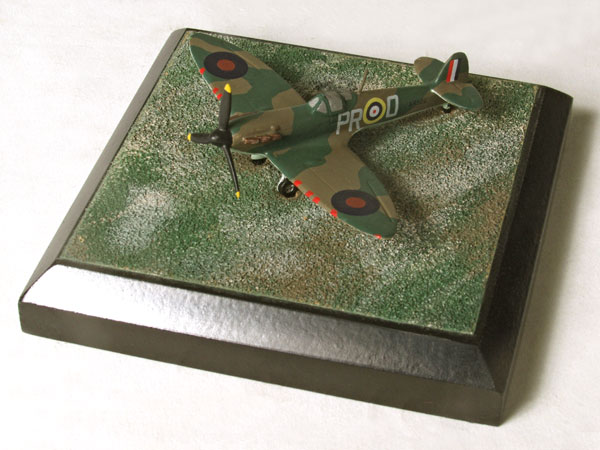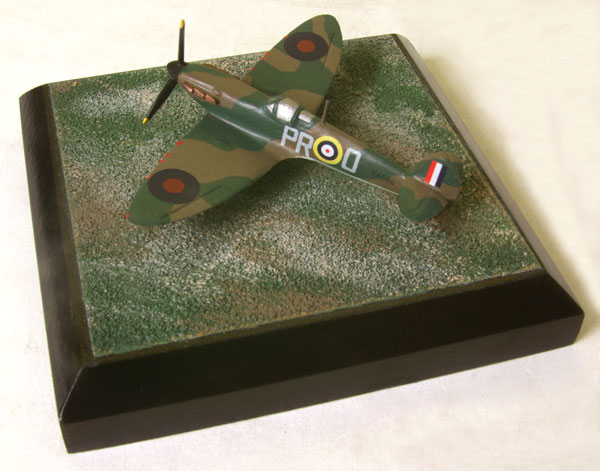Supermarine Spitfire Mk IA
Supermarine Spitfire Mk IA X4586 PR-O 609 Squadron,
Flt Lt J C Dundas, Warmwell, 28th November 1940
The Auxiliary Air Force came in to being in 1936 as an adjunct to the regular RAF, and in many ways resembled the county Yeomanry; it was an activity to be undertaken in “spare time”, and was organised on a regional basis with strong links to its home areas. 609 West Riding of Yorkshire Squadron was formed in February 1936, and its first Commanding Officer, Sir Harald Peake, himself belonged to the Yeomanry. John Dundas, born in West Yorkshire, joined 609, initially equipped with Hawker Harts and Hinds, in 1938. It received its first Spitfires on the very eve of the outbreak of war, in August 1939, and the outbreak of hostilities 609, like all the Auxiliaries, became incorporated in to the regular air force; but like its fellow units retained much of its singular geographically-based character.
The squadron, having spent most of the first months of the war in Scotland, moved south to Northolt in May 1940 and was involved with the operations covering the withdrawal of the British forces from Dunkirk at the end of the month, and in this fighting Dundas scored his first victories. His score grew steadily during the Battle of Britain during which 609 was stationed at Middle Wallop and Warmwell; flying from there John Dundas contributed to the squadron diary on the action of 13th August (“Eagle Day”) that “Thirteen Spitfires left Warmwell for a memorable tea party over Lyme Bay, and an unlucky day for the species Ju 87”.
By 9th October he was credited with ten aircraft destroyed, four shared destroyed, one probably destroyed and four and a half damaged, and on that date he was awarded the DFC. On 27th November he was authorised to carry out some local flying, in spite of indifferent weather, following a report of a Ju 88 flying along the south coast; he caught it up dear Cherbourg, and shot it down near a Bf 109 airfield. On the following day in a dogfight off the Isle of Wight he reported on the radio that he had shot down a Messerschmitt 109; it was learned later that the pilot was Major Helmut Wick, Geschwaderkommodore of Jagdgeschwader 2, at the time the top-scoring Luftwaffe fighter pilot credited with fifty-six kills. Immediately afterwards Dundas was shot down by Wick’s wingman, Leutnant Rudolf Pflanz and his own wingman, Pilot Officer Baillon, was also lost. His tally had by then increased to twelve destroyed; Dundas at the time of his death was the top scorer of 609 Squadron, and a bar to he DFC was promulgated posthumously in December. He had been the last surviving pre-war Auxiliary member of the West Riding squadron.
X4586 made its first flight on 29th September 1940, and was delivered to 609 Squadron on 8th October. When it was shot down on 28th November its had logged 37 hours 55 minutes flying time.
Scale 1:144 Wingspan 3.11″ (79 mm)
Base size 6.37″ (100 mm) square (No. 2)
Weight not including base 1 ozs (31 grams) Limited edition of 25 only



